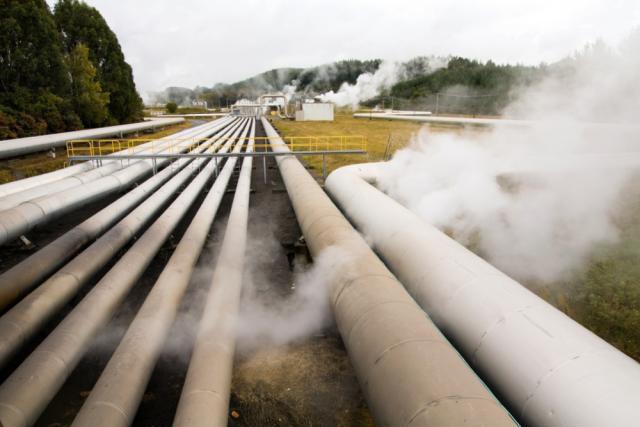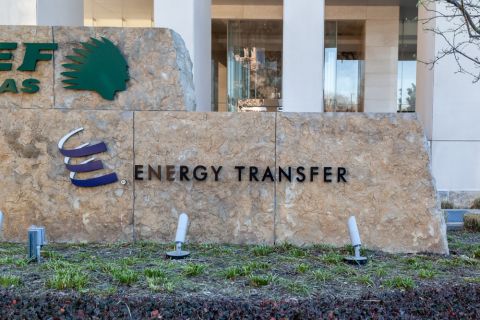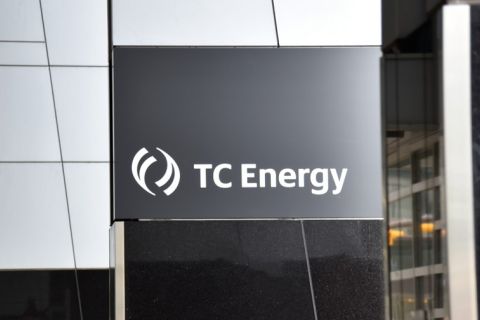
Geothermal energy may be getting a lot of attention recently, but several technical challenges still need to be resolved to bring geothermal into the mainstream, writes Steve Hendrickson, president of Ralph E. Davis Associates (RED), an Opportune LLP company. (Source: Shutterstock.com)
This is an excerpt from a recent Ralph E. Davis Associates (RED) Weekly E&P Update Newsletter.
Geothermal energy has been in use for over 100 years but it has never been a significant part of our energy mix. It’s getting a lot of attention recently because it has some attractive features as a low-carbon energy source, but there are some technical challenges to be worked out first.
Historically, geothermal energy was derived from relatively shallow sources. These sources are fairly limited in extent, however. In the U.S., most existing geothermal energy projects are in California and Nevada, and overall, geothermal energy accounts for less than 1% of U.S. energy consumption.
As we drill deeper, we encounter higher subsurface temperatures almost everywhere, and these higher temperatures are the target of today’s interest in geothermal sources. Geothermal energy offers benefits over low-carbon energy sources like wind and solar because they’re continuous (capacity factors of 70%-80%), reliable, and could be located almost anywhere.
Geothermal energy can be used to drive electric generators via turbines or they can be used to power direct heating systems. A good example of the latter is found in Iceland where direct heating is used to heat buildings, roads and sidewalks, and geothermal hot water is distributed through separate hot and cold-water supply systems.
For electric generation, there are a variety of approaches. The simplest involves producing superheated water from a geothermal reservoir and allowing it to expand through a turbine. The cooled water may or may not be reinjected into the producing formation and the producing/injecting wells may be fracture stimulated to increase water (hence, energy) flow rates.
More complex closed systems are the subject of much research. In those, a “geothermal fluid” is circulated down and up a well or underground loop like a radiator. This fluid can either be expanded through a turbine or used to heat a “working fluid” at the surface that powers the turbine (binary cycle). The neat thing about the binary cycle approach is that problems associated with the reservoir fluid (corrosion and scale, for instance) can be avoided, and the geothermal and working fluids can be selected based on their attractive thermal and PVT properties. Supercritical CO₂ is also of particular interest.
There are a lot of technical challenges to resolve to bring geothermal into the mainstream, however, mostly due to the high temperatures encountered. Other concerns are well depths, larger hole sizes, acid gases and lost circulation problems. The good news is these are exactly the types of problems the oil and gas industry have a long history of overcoming. Just like underground storage of CO₂, geothermal energy is another aspect of the energy transition I expect the industry to play a big part in.
About the Author:
Steve Hendrickson is the president of Ralph E. Davis Associates, an Opportune LLP company. Hendrickson has over 30 years of professional leadership experience in the energy industry with a proven track record of adding value through acquisitions, development and operations. In addition, he possesses extensive knowledge of petroleum economics, energy finance, reserves reporting and data management, and has deep expertise in reservoir engineering, production engineering and technical evaluations. Hendrickson is a licensed professional engineer in the state of Texas and holds an M.S. in Finance from the University of Houston and a B.S. in Chemical Engineering from The University of Texas at Austin. He recently served as a board member of the Society of Petroleum Evaluation Engineers and is a registered FINRA representative.
Recommended Reading
EQT CEO: Biden's LNG Pause Mirrors Midstream ‘Playbook’ of Delay, Doubt
2024-02-06 - At a Congressional hearing, EQT CEO Toby Rice blasted the Biden administration and said the same tactics used to stifle pipeline construction—by introducing delays and uncertainty—appear to be behind President Joe Biden’s pause on LNG terminal permitting.
Energy Transfer Asks FERC to Weigh in on Williams Gas Project
2024-04-08 - Energy Transfer's filing continues the dispute over Williams’ development of the Louisiana Energy Gateway.
Equitrans Delays WV-VA Mountain Valley Natgas Pipe Again, Boosts Cost
2024-02-20 - U.S. energy firm Equitrans Midstream delayed the estimated completion of its Mountain Valley natural gas pipeline from West Virginia to Virginia to the second quarter from the first quarter due in part to adverse weather in January.
Early Startup of Trans Mountain Pipeline Expansion Surprises Analysts
2024-04-04 - Analysts had expected the Trans Mountain Pipeline expansion to commence operations in June but the company said the system will begin shipping crude on May 1.
TC Energy’s Keystone Back Online After Temporary Service Halt
2024-03-10 - As Canada’s pipeline network runs full, producers are anxious for the Trans Mountain Expansion to come online.



